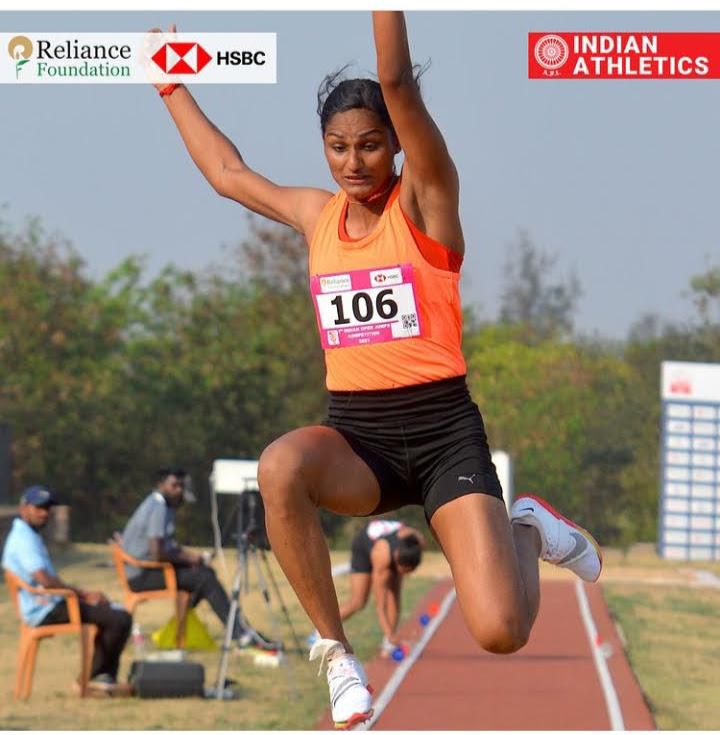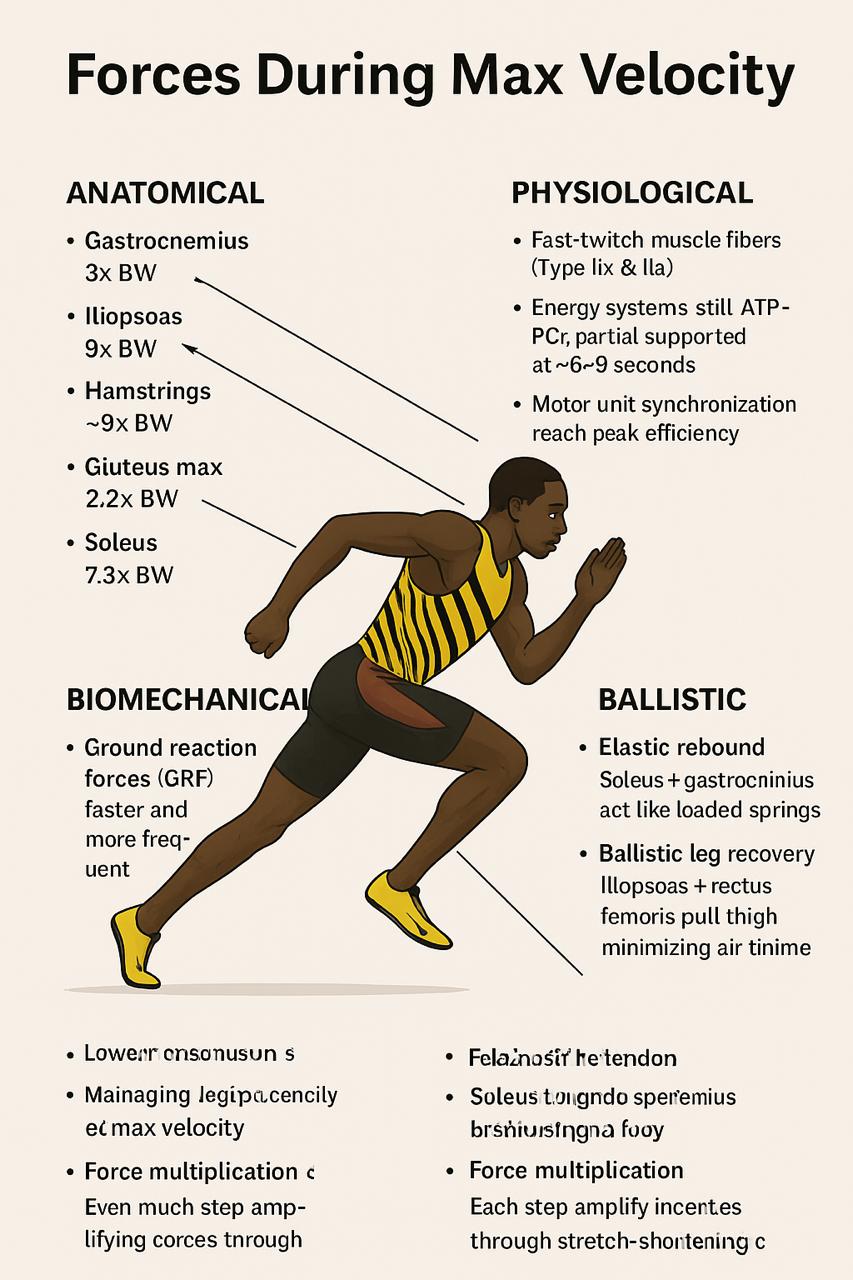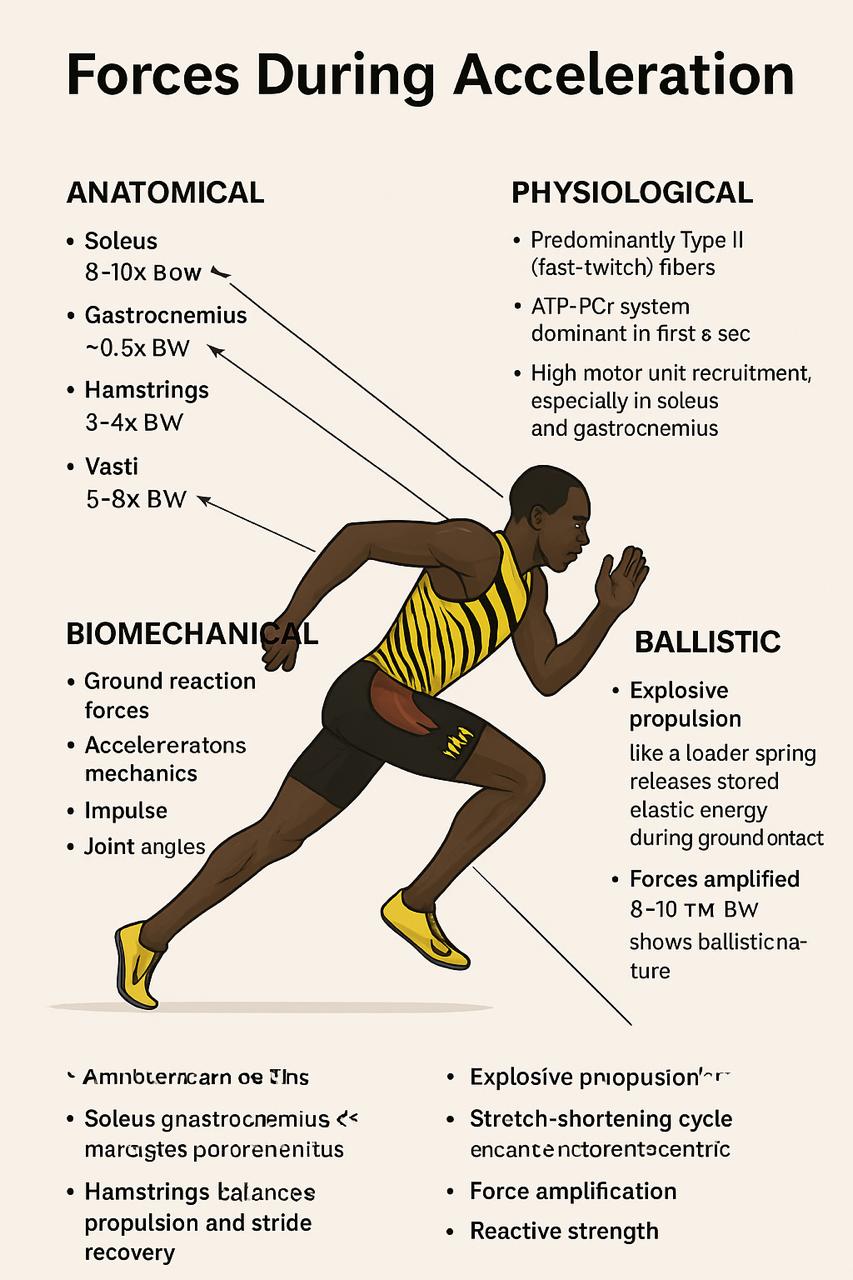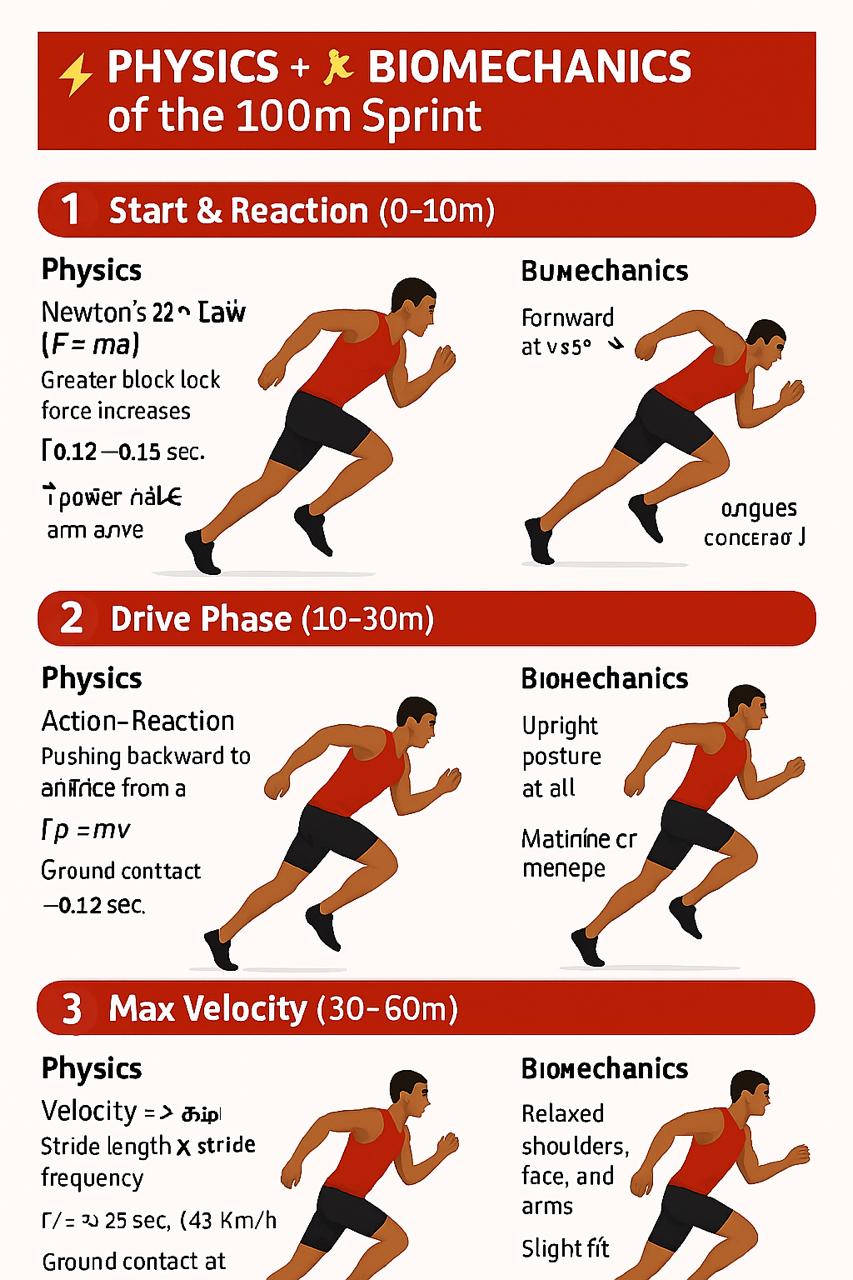The Biomechanics and Biomedical Significance of the "Set" Position in Sprinting
The image depicts a sprinter in the "set" position, a crucial stance in track and field events. The biomechanical analysis of this position reveals several key aspects that contribute to a successful start.
Key Biomechanical Aspects:
- Knee Angles:
- The front knee is bent at approximately 90 degrees.
- The rear knee is bent at around 120 degrees.
These angles are critical for generating explosive power and maintaining balance.
- Hip Positioning:
- The hips are positioned above the shoulders, indicating a forward lean.
This posture helps in achieving a powerful drive out of the blocks.
Biomedical Effects:
- Muscle Activation:
- The set position activates key muscle groups, including the quadriceps, hamstrings, glutes, and core muscles.
- Proper muscle activation is essential for explosive acceleration.
- Force Generation:
- The angle of the knees and the positioning of the hips enable the sprinter to generate significant force against the starting blocks.
- This force is crucial for achieving a fast start.
- Balance and Stability:
- The biomechanical alignment in the set position helps maintain balance and stability, allowing the sprinter to explosively drive out of the blocks.
- Injury Prevention:
- Proper technique in the set position can help reduce the risk of injury by ensuring that forces are distributed appropriately across the muscles and joints.
Performance Enhancement:
- Explosive Acceleration:
- The biomechanical aspects of the set position contribute to explosive acceleration, enabling the sprinter to quickly gain speed.
- Reaction Time:
- A well-executed set position allows for a quicker reaction to the starting signal, giving the sprinter a competitive edge.
Conclusion:
In summary, the biomechanical analysis of the set position highlights its importance in achieving a successful start in sprint events. Proper technique and muscle activation are crucial for maximizing performance and minimizing the risk of injury.





